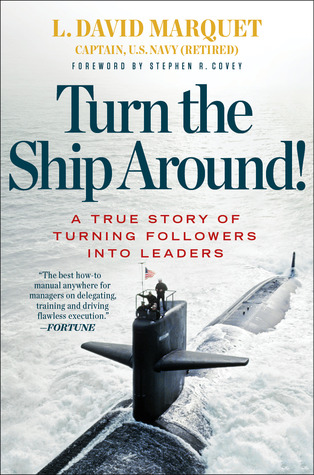More on this book
Community
Kindle Notes & Highlights
Read between
September 21, 2018 - March 21, 2019
It is the art of releasing human talent and potential.
Leadership is communicating to people their worth and potential so clearly that they are inspired to see it in themselves.
In our modern world, the most important work we do is cognitive;
Those who take orders usually run at half speed, underutilizing their imagination and initiative.
Control, we discovered, only works with a competent workforce that understands the organization’s purpose. Hence, as control is divested, both technical competence and organizational clarity need to be strengthened.
Rather than telling everyone what we needed to do, I would ask questions about how they thought we should approach a problem.
humans are born in a state of action and natural empowerment.
Empowerment programs appeared to be a reaction to the fact that we had actively disempowered people.
I concluded that competence could not rest solely with the leader. It had to run throughout the entire organization.
One of the things that limits our learning is our belief that we already know something.
To promote long-term success, I had to ignore the short-term reward systems.
It didn’t matter how smart my plan was if the team couldn’t execute it!
When the performance of a unit
goes down after an officer leaves, it is taken as a sign that he was a good leader, not that he was ineffective in training his people properly.
There’s a cost to the people, though, which only becomes evident over time. People who are treated as followers treat others as followers when it’s their turn to lead.
Caring deeply about the people and mission, but not caring about the bureaucratic consequences
The time to be questioning or even critical is after trust has been established.
It might seem like a little thing, but on board a nuclear submarine, little things like lack of punctuality are indicative of much, much bigger problems.
The overwhelming sense on the ship was that we needed to avoid problems:
Does leadership in your organization take control or give control?
They didn’t care or need to know the specifics of what we were going to do as long as the evidence showed that the submarine was improving in performance,
ACHIEVE EXCELLENCE, DON’T JUST AVOID ERRORS is a mechanism for CLARITY.
“Don’t move information to authority, move authority to the information.”
Use “I intend to . . .” to turn passive followers into active leaders.
Resist the urge to provide solutions.
I have the authority and ability to empower you (and you don’t). Fundamentally, that’s disempowering.
we searched for the organizational practices and procedures that would need to be changed in order to bring the change to life with the greatest impact.
it put requirements on the new decision makers to have a higher level of technical knowledge and clearer sense of organizational purpose than ever before.
“caring but not caring”—that is, caring intimately about your subordinates and the organization but caring little about the organizational consequences to yourself.
When you’re trying to change employees’ behaviors, you have basically two approaches to choose from: change your own thinking and hope this leads to new behavior, or change your behavior and hope this leads to new thinking.
Frankly, I didn’t care whether people thought differently at some point—and they eventually did—so long as they behaved in certain ways.
SHORT, EARLY CONVERSATIONS is a mechanism for CONTROL. It is a mechanism for control because the conversations did not consist of me telling them what to do. They were opportunities for the crew to get early feedback on how they were tackling problems. This allowed them to retain control of the solution. These early, quick discussions also provided clarity to the crew about what we wanted to accomplish. Many lasted only thirty seconds, but they saved hours of time.
The key to your team becoming more proactive rests in the language subordinates and superiors use.
As the level of control is divested, it becomes more and more important that the team be aligned with the goal of the organization.
Mechanism: Resist the Urge to Provide Solutions
When you follow the leader-leader model, you must take time to let others react to the situation as well. You have to create a space for open decision by the entire team, even if that space is only a few minutes,
Eliminate Top-Down Monitoring
ELIMINATING TOP-DOWN MONITORING SYSTEMS is a mechanism for CONTROL.
Don’t preach and hope for ownership; implement mechanisms that actually give ownership.
Competence means that people are technically competent to make the decisions they make.
Specify goals, not methods.
Our mechanism to prevent recurrence of the problem was to implement the taking of deliberate actions
TAKE DELIBERATE ACTION is a mechanism for COMPETENCE.
The key is that as the importance of doing things right increases, so does the need to act deliberately.
If all you need to do is what you are told, then you don’t need to understand your craft. However, as your ability to make decisions increases, then you need intimate technical knowledge on which to base those decisions.
Training is a subset of learning, which in turn is a subset of personal growth. We strive to grow each day.
An effective survey question to ask your employees
is how many minutes a week they spend learning on their own, not mandated, not directed.
CONTINUALLY AND CONSISTENTLY REPEAT THE MESSAGE is a mechanism for COMPETENCE.
Are any of your employees on the brink of going AWOL because they’re overworked and underappreciated?


